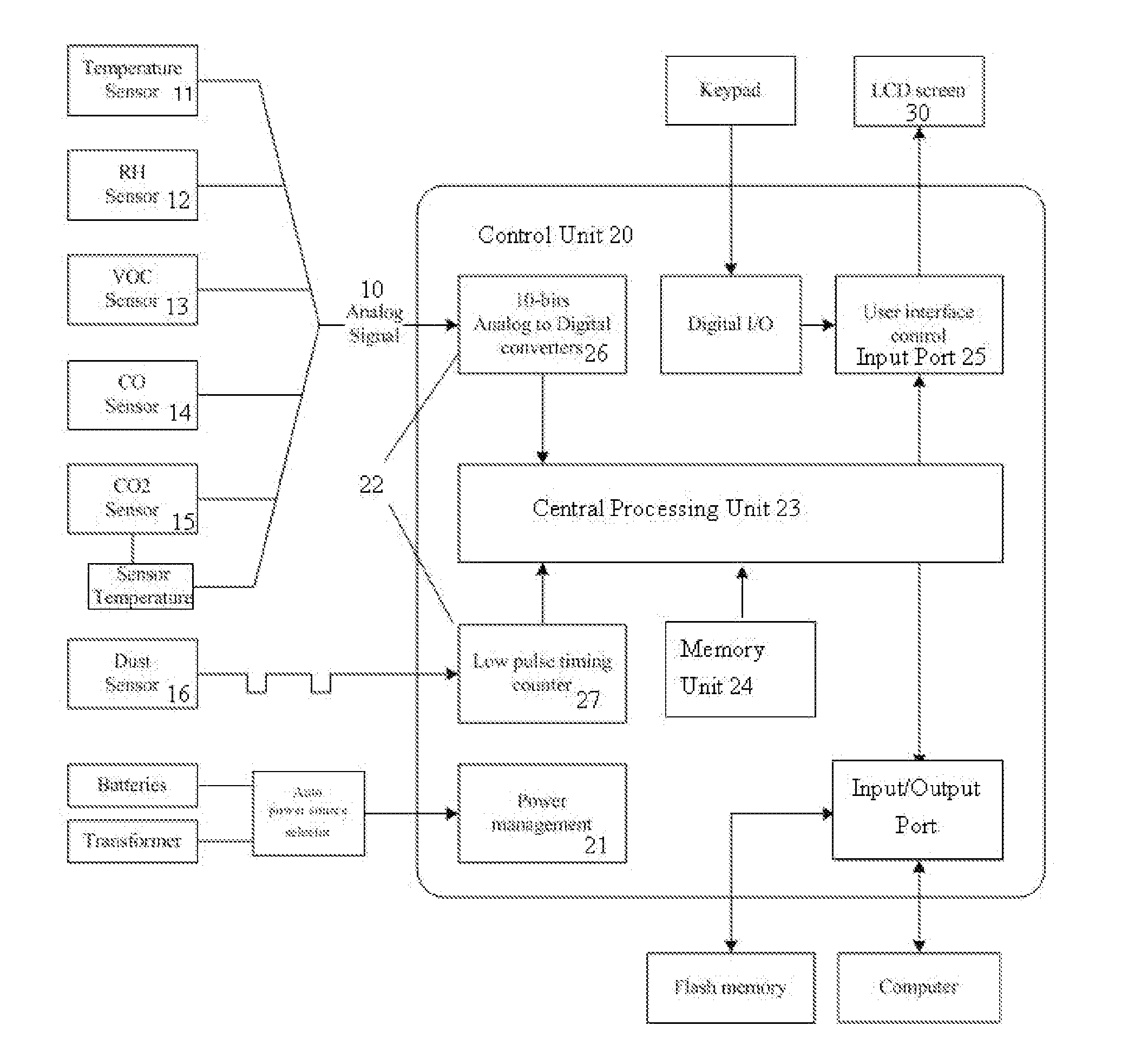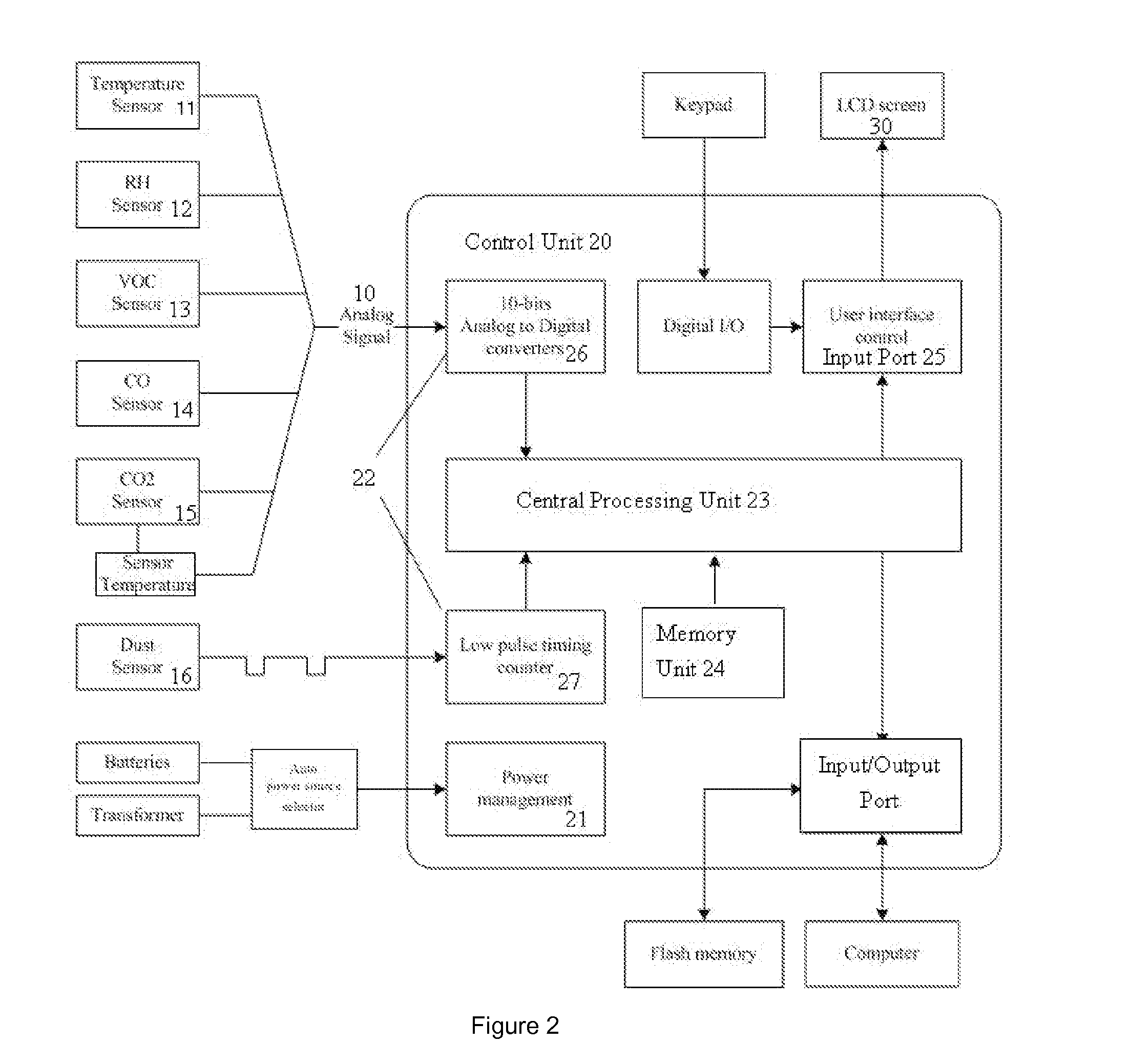Method and Device for Environmental and Health Monitoring
- Summary
- Abstract
- Description
- Claims
- Application Information
AI Technical Summary
Benefits of technology
Problems solved by technology
Method used
Image
Examples
Example
DETAILED DESCRIPTION OF THE DRAWINGS
[0229]Referring to FIGS. 1 and 2, the device of the present invention contains the sensors 10, the control unit 20 and the display unit 30.
[0230]The sensors 10 obtain the values of different environmental parameters. The control unit 20 collects the obtained values. In the present embodiment, the sensors 10 are a temperature sensor, a relative humidity sensor 12, a volatile organic compounds sensor 13, a carbon monoxide sensor 14, a carbon dioxide sensor 15, and a respirable suspended particulates sensor 16. Other environmental sensors such as the ozone sensor, the nitrogen dioxide sensor, the air flow rate sensor, the radon level sensor and the formaldehyde sensor can be applied for the same purpose.
[0231]FIGS. 3-8 indicate the circuit diagrams for the sensors in the embodiment of the present invention. The circuit for the temperature sensor 11 is shown in FIG. 3. In the present embodiment, a thermistor in which its resistance varies with the tem...
PUM
 Login to View More
Login to View More Abstract
Description
Claims
Application Information
 Login to View More
Login to View More - R&D
- Intellectual Property
- Life Sciences
- Materials
- Tech Scout
- Unparalleled Data Quality
- Higher Quality Content
- 60% Fewer Hallucinations
Browse by: Latest US Patents, China's latest patents, Technical Efficacy Thesaurus, Application Domain, Technology Topic, Popular Technical Reports.
© 2025 PatSnap. All rights reserved.Legal|Privacy policy|Modern Slavery Act Transparency Statement|Sitemap|About US| Contact US: help@patsnap.com



